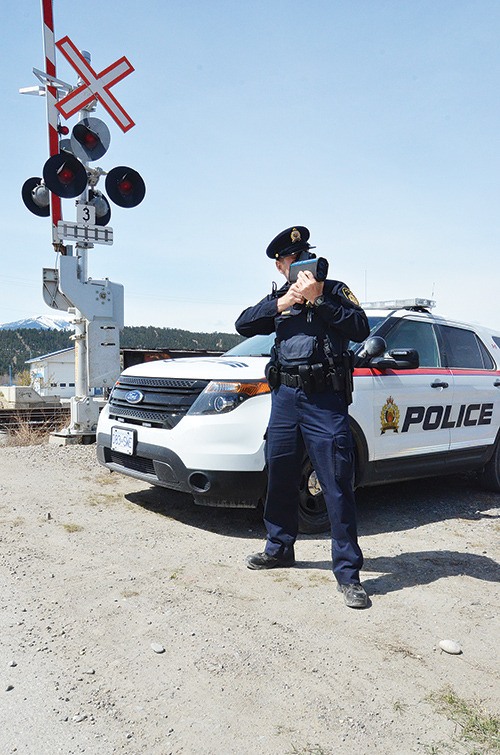Canadian commerce is dependent on our railway system. But the dangers associated are brute and unforgiving, and can only be combatted through public awareness.
Between Monday, April 29th and Sunday, May 5th, the Canadian Pacific Police Service stationed themselves in high risk areas throughout the Columbia Valley to remind the public of railroad dangers. The demonstrations were part of the annual Public Rail Safety Week in Canada.
“The Canadian Pacific Police Service’s priority over our 100 years of service is to ensure public safety and to protect railway personnel, property and railway operations,” said Canadian Pacific Police Service Chief Ivan McClelland. “Public Rail Safety Week is an important initiative to remind the public that we all have a role ensuring safety in the communities in which we operate.”
Over the course of 2012, Canada’s Transportation Safety Board recorded a greater number of crossing accidents and trespassing incidents than in previous years. There were 189 automobile crossing accidents resulting in 31 fatalities and 32 serious injuries. The Transportation Safety Board also recorded 71 trespassing incidents, which resulted in 47 fatalities and 20 serious injuries.
One of those incidents hit home for Invermere residents, when 50-year-old Carmen Salazar was struck by a train and killed instantly on the evening of Tuesday, February 20th in Athalmer, in nearly the same spot the rail safety demonstration was held.
In that incident, the train was estimated to be traveling at close to 60 kilometres per hour, which is the speed limit for trains traveling through residential areas.
In the first two months of 2013 alone, the safety board recorded 42 automobile crossing incidents which resulted in 10 fatalities and two serious injuries. Trespassing in January and February was blamed for seven fatalities and one serious injury.
Mr. McClelland noted these numbers do not represent the many near-collisions that occur.
To drive the point home, more than 100 educational and enforcement programs took place over the week at schools and rail crossings in the East Kootenays.
The focus this year was to educate the public on the seriousness of trespassing on railway property, and to also enlighten situational awareness while approaching crossings. That meant an emphasis being placed in the dangers of distracted driving.
People who trespass on railway property or fail to yield the right-of-way to an approaching train are committing criminal offences under the federal Rail Safety Act and under provincial legislation in some provinces.
While the Canadian Pacific Police Service focuses their attention toward railway related issues, they can fully enforce federal and provincial laws.
Officers usually promote public safety by keeping the boxcars free of train hoppers through “trespasser abatement patrols” and through enforcement of traffic legislation at railway crossings.
They also ensure seamless operation of North American rail infrastructure by providing supply chain security.
